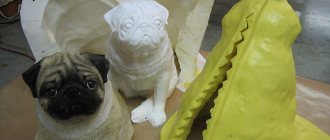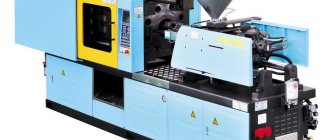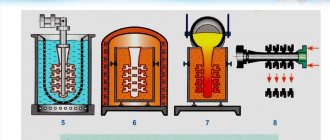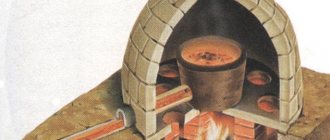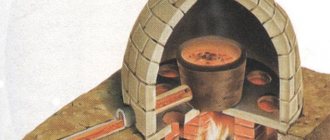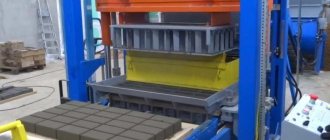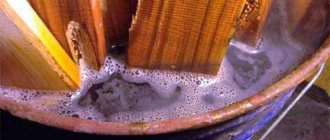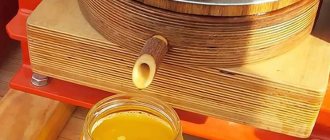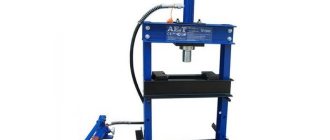Making molds for aluminum casting stages and manufacturing process
Aluminum is a fairly cheap metal and at the same time has remarkable performance characteristics. Therefore, aluminum products are in great demand. The main method of manufacturing aluminum parts is metal injection molding.
Casting requires molds into which liquid metal will be poured. When performing aluminum injection molding, you can very quickly produce a large number of aluminum parts using a single mold, which is impossible to do using other casting methods.
Moscow Foundry LLC will produce molds for aluminum casting. The most modern equipment and the experience of our employees allow us to produce any design of molds for aluminum injection molding.
We will advise you on any questions!
Have a question?
Our services
Aluminum injection molding is one of the popular metal processing processes, from which products of any desired (even the most complex) configuration are created using exposure to high temperatures. Aluminum die casting is used in production to create high-quality, durable and reliable parts with unique properties.
The described process is one of the fully mechanized manipulations, during which molten metal is fed into a special split mold under artificially created pressure using a piston moving at a fairly high speed.
This method of casting guarantees no shrinkage and a high level of precision in the work. In the process of such creation of parts, the existence of defective products is practically excluded. This is one of the most important advantages of the described process. Parts and other products created in this way have found application in:
- instrument making;
- mechanical engineering;
- aircraft manufacturing
Aluminum is a soft but very durable metal that is difficult to process in various ways, but has a fairly low melting point, which allows it to be cast even at home or in a small workshop. Of course, the most accurate, streamlined process is possible when using professional equipment installed in production workshops.
Advantages of ordering molds from the Foundry Group of Companies
If you want to order or buy a mold at a factory in Moscow, please contact the group. We guarantee strict adherence to order deadlines and high quality of forms. Our plant produces molds for the production of various products from non-ferrous metals and plastics.
The main advantages of ordering molds from our factory include:
- Meeting production deadlines. We guarantee the production of casting molds within the time limits specified in the contract.
- Use of modern equipment. Its use ensures high quality of the finished form and its long service life.
- Guarantee. We are confident in the quality of our products, so we necessarily provide a guarantee on our forms.
- Quality materials. It is thanks to the use of high-quality steel that molds can be used for a long time for large-scale production.
In our company you can always buy molds for the production of castings from non-ferrous metals and plastics at the best price. We guarantee strict adherence to technology, an individual approach and professionalism of specialists who design and carry out the production of molds.
Die casting of aluminum alloys - which alloys are better?
1. AK12 alloy , also called silumin, is a mixture of aluminum and silicon, to which a small amount of magnesium is added (up to 0.5%). The alloy is one of the hardest of the variety of aluminum-based mixtures. It is also characterized by low casting shrinkage and tightness. It is actively used for injection molding due to the fact that it does not crack during the creation of blanks. Used for the production of parts operating under light load.
2. Aluminum alloy AK12M2 is produced by adding a small amount of silicon (11 to 13%), copper (1.8-2%) and iron (0.6-0.9%) to molten aluminum, mainly to make the workpiece better separated from the form). It is mainly used for the production of aluminum ingots and shaped castings.
3. AK9 alloy is produced by mixing aluminum with silicon (85-90% + 8-11%) and adding a small amount of impurities: nickel (up to 0.3%), copper (up to 1%) and zinc (up to 0.5%) . The alloy is characterized by high strength, but does not differ in ductility. It is used for the production of aircraft parts, elements of complex instruments and other workpieces that can withstand high loads, but are not subject to increased vibrations.
4. Aluminum alloy AK9M2, due to the favorable ratio of aluminum, silicon and copper, has the most balanced ratio of hardness to ductility. Due to its physical properties, the alloy is actively used for the production of unloaded parts, housings and parts for various devices. May be subject to artificial aging and hardening.
5. AK5M2 alloy is considered one of the most popular in the aluminum-silicon-copper system. It is distinguished not only by its high strength and relative ductility, but also by its low cost. The alloy is used for “non-critical casting”: the production of aluminum cookware, shaped castings, unloaded parts, etc.
Aluminum die casting or die casting is a quick and relatively inexpensive way to produce large quantities of blanks and parts for the mechanical engineering, medical or food industries. Depending on the specific tasks, you can choose one or another alloy that most accurately meets the final operating conditions of the product.
What is aluminum die casting today?
Today, aluminum injection molding is a full cycle of product production, which can begin from the design of linear equipment to the final product at the output.
The essence of the process is to fill a special mold made according to a template or custom order with molten aluminum. Aluminum die casting makes it possible to inexpensively produce quite complex products due to its low melting point. Finished parts can weigh from several grams to tens of kilograms and have a wide range of applications.
Single and multiple molds
At a certain stage of production, it becomes possible to reduce casting time due to multiple molds (they are also called multi-cavity molds).
They are used to increase production speed and reduce the cost of workpieces. Multi-place molds, as the name suggests, allow you to create multiple copies of a single part with a single pour of polymer. Just don’t use these molds at the start until the process is debugged and ideal castings have not yet been created from single molds. It is advisable to produce at least several thousand units of products before switching to multi-piece molds.
As a rule, entrepreneurs on a tight budget make the most of their one-piece molds, unless the manufacturer itself finances the production of their molds.
Why is pressure used in aluminum casting?
Aluminum die casting is done to increase mold filling speed, as well as expand product detailing capabilities. In modern production, pressure from 35 to 700 MPa is used for casting blanks from aluminum and other non-ferrous metals.
Similarly, today, at minimal cost, it is possible to cast custom-made aluminum parts for the automotive (aluminum engine blocks, small parts), medical and food industries, as well as numerous parts for the production of household appliances, plumbing equipment and much more.
Among the advantages of aluminum injection molding are high productivity, excellent surface quality of finished products (grade 5-8), as well as high precision detailing of the finished product (grade 3-7).
Metalworking parts
Milling and turning works. Takes on average 2 weeks.
The cost of aluminum plates is higher than steel
| Metalworking Moscow | Address | Telephone | Milling | Assembly | |
| Tsvetmet | Arbatetskaya st., 2, building 21, Moscow | +7 | Not really | Yes / No | |
| Industrial construction | 2nd Perov Polya Ave., 5, Moscow | Not really | Yes / No | ||
| Unex | Vyatskaya st., 49, building 1, Moscow | +7,, +7 (495) 748-14-50 | Not really | Yes / No | |
| Cut Gear - CNC metalworking | Yeniseiskaya st., 1, building 3, Moscow | +7 | Not really | Yes / No | |
| Repair of levers | Russia, Moscow, South-Western administrative district, Yuzhnoye Butovo district, Projected passage No. 661 | +7 | Not really | Yes / No | |
| Stainless Metalservice | Izyumskaya st., 46, Moscow | +7 +7 | Not really | Yes / No | |
| Race-Lab | st. Pererva, 19, building 3, Moscow | +7 +7 | Not really | Yes / No | |
| StroyMontazhServis-M | Irkutskaya st., 11, bldg. 1, Moscow | +7 | Not really | Yes / No | |
| Company Modern Technologies | Bryanskaya st., 2, Moscow | +7 | Not really | Yes / No | |
| Surfox | Kutuzovsky Prospekt, 36, building 10, Moscow | +7 | Not really | Yes / No | |
| APS Radis | Sharikopodshipnikovskaya st., 4, Moscow | +7, | Not really | Yes / No | |
| Trust metal | Volokolamskoye sh., 73, Moscow | +7, | Not really | Yes / No | |
| Continental | 3rd Khoroshevskaya st., 11A, Moscow | +7 | Not really | Yes / No | |
| TD Sortprokat | st. Verkhnie Polya, vl18V, Moscow | +7 | Not really | Yes / No | |
| Wholesale/retail metal goods | Ugreshskaya st., 2, building 23, Moscow | +7 | Not really | Yes / No | |
| Santa M1 | Avtozavodskaya st., 25, Moscow | +7 | Not really | Yes / No | |
| StalKom Plus | Russia, Moscow, MKAD, 85th kilometer, external side | Not really | Yes / No | ||
| PKF Stroy Invest | Nizhegorodskaya st., 29-33с36, Moscow | +7 | Not really | Yes / No | |
| Steel production | Leninsky Prospekt, 42, bldg. 1, Moscow | +7 | Not really | Yes / No | |
| Tech Metal | Altufevskoe sh., 27A, building 1, Moscow | +7 +7 | Not really | Yes / No | |
| Sphere of groups | st. Borisovskie Ponds, 1, building 1, Moscow | Not really | Yes / No | ||
| Technological equipment and metalworking | Novodmitrovskaya st., 5A, building 1, Moscow | +7 | Not really | Yes / No | |
| Bonetti Opus Rus | Ryazansky Prospekt, 8A, building 24, Moscow | +7 | Not really | Yes / No | |
| First fastener plant | st. Vavilova, 69A, Moscow | 8 | Not really | Yes / No | |
| Profile | Kulakov lane, 6, Moscow | Not really | Yes / No | ||
| TPK K-Stroy | 1st Vyazovsky Ave., 4, bldg. 1, Moscow | +7 | Not really | Yes / No | |
| Trest Spetsmashmontazh No. 7 | Olonetsky Ave., 4, bldg. 2, Moscow | +7, +7 | Not really | Yes / No | |
| TC Stalintex Trade | Novosuschevskaya st., 19B, Moscow | 8,,, +7 (495) 649-83-00,,, +7 (499) 973-38-97,,, +7 (499) 973-25-47, | Not really | Yes / No | |
| GasSnabStroy | Dmitrovskoe sh., 163, building 6, Moscow | +7, | Not really | Yes / No | |
| Grund | Zeleny prosp., 3/10с15, Moscow | +7,, +7 (495) 232-91-85 | Not really | Yes / No |
Preparation for the process
In the aluminum die casting process, molten metal is poured into specially prepared molds by forcing it through a piston.
A piston moving at high speed prevents the hot metal from changing its intended shape and completely eliminates air bubbles from its mass, ensuring no shrinkage.
The distribution of the hot mass of liquid aluminum occurs rapidly, the prepared mold is filled very quickly, after which the entire mass that filled it gradually hardens, exactly repeating the established configuration of the part.
When producing elements with cavities, machines are used that are equipped with special pistons that allow penetration into the filled mold.
The process of injection molding of aluminum alloys has become widespread, and parts manufactured in this way are in great demand due to the high malleability and ductility of the source material.
During work, so-called molds are used, in which the process of aluminum injection molding is carried out.
Where to work with molds?
Where is it better to produce plastic parts for your device: at home or in China?
In most cases, it is better to start working with a local manufacturer in your country (unless you live in a country where the industry is very weak). Then, when volumes exceed 10 thousand pieces, you can switch to a Chinese manufacturer to reduce costs.
China is simply the ideal choice for large-scale production. Just don’t start the initial development and debugging of the process there. With local manufacturers, any issues can be resolved much easier and faster.
Make the first launch and the first mistakes at the local level, and then move production to China.
Translator's note: it is important to consider that transporting a mold from one country to another (and even more so to China from Europe) is a complex and expensive undertaking. Therefore, we select local prototype manufacturers for our clients, and if the series is large in total, we immediately place it in China with the expectation that the mold will be amortized over several iterations of production. After all, if you start mass production from local manufacturers, then the mold will be local, and transporting it to China or creating a second mold in China will not justify itself.
Features of the production process
Aluminum die casting is used in production to produce parts of various sizes and shapes, as well as other castings. During the production process, molten aluminum heated to a temperature of 600˚ Celsius is fed under high pressure into a steel mold.
The main distinctive features and features of casting carried out in production workshops:
- rapid heating of the metal to the melting point;
- accurate supply of a certain amount of raw materials intended for casting;
- full automation of the production process;
- creating sufficiently high pressure to perform quality work.
All this allows us to obtain high-quality parts and components of machines and devices, manufactured with high precision and in the shortest possible time. Another distinctive feature that can be recognized as an advantage of manufacturing parts from aluminum using injection molding is high productivity with minimal labor intensity of the process.
Manufacturers take advantage of these positive qualities to create a large number of high-quality parts of various configurations intended for use in a wide variety of industrial applications.
The inherent advantage of aluminum injection molding also lies in the fact that the components of devices and other elements manufactured in this way practically do not require additional processing carried out mechanically.
To carry out all the necessary operations, the use of aluminum injection molding machines used in production workshops is especially popular among manufacturers.
These are machines equipped with a compression chamber:
- hot;
- cold.
Many enterprises widely use horizontally installed cold pressing chambers into which molten aluminum is fed under pressure.
Family molds
In most cases, a separate mold is used for each individual plastic part within the device.
The body will need at least two parts: upper and lower. But most products will require more than two plastic parts. Molds are very expensive, and buying multiple molds at once is a major financial hurdle, so you need to aim for a minimum number of plastic parts.
An alternative option for minimizing the required molds is to use a special type of multiple molds, the so-called family molds. The family mold allows you to combine several different parts into one casting.
While the typical multi-slot form creates multiple copies of the same part, the family form creates different parts.
Sounds good, right? Unfortunately, not everything is so simple, you have to pay for everything. The main problem with family molds is that every piece has to be roughly the same size.
Otherwise, one of the mold cavities will be filled with molten polymer before the others. Family molds should be designed so that all cavities are filled with polymer at approximately the same rate. This clearly limits the possibilities of their application. It is unlikely that all body parts will be the same size.
Variety and use of alloys, required machines and molds
Products made of aluminum alloys are in high demand:
- Silumin is an alloy of aluminum and silicon. After adding magnesium to its composition, the final product becomes extremely durable. This is one of the most low-shrinkage and highly airtight alloys. It is not subject to cracking during manufacture and is used to create elements subject to light loads.
- In order to create shaped castings, an alloy is used, which, in addition to aluminum itself, includes copper, silicon and iron. This workpiece is perfectly separated from the mold and is highly durable.
- When creating high-strength elements, an aluminum alloy with the addition of silicon, nickel, copper and zinc is used.
A particular alloy is selected depending on the tasks to be performed by the manufactured parts and the loads that the finished elements will have to withstand.
All operations are carried out on specially created equipment, which can be used both in a production workshop and in a small private workshop.
Using special equipment for aluminum casting, you can create items necessary in everyday life and parts that are very important when assembling various machines and units.
To create the above alloys, it is necessary to use machines equipped with both cold and hot chambers designed to melt the metal. Machines with hot chambers are necessary in the production of alloys containing zinc. The molten metal is introduced into the internal space of the mold gradually. He fills out the entire form.
When working with alloys that contain magnesium and copper, castings are produced due to the fact that the molten composition is introduced into the mold under fairly high pressure. Its level in certain situations reaches 700 MPa. It is this production method that makes it possible to significantly increase labor productivity without increasing the labor intensity of the process, and parts manufactured in this way do not require mechanical processing.
The choice of equipment when creating a workshop or organizing a casting process is based on the characteristics of the technological process. When casting aluminum under pressure, it is as follows:
- In a hot furnace, the metal is heated to the melting point and turns into a liquid state.
- At this time, a special mold must be prepared in the workshop, the internal contour of which fully corresponds to the parameters of the future part.
- Molten metal is fed under high pressure into a prepared mold.
- After cooling, the finished product is removed from the split mold.
Today, some manufacturers use other casting methods. This can be casting into earth, sand or cement, but aluminum injection molding makes it possible to obtain a product with a minimum wall thickness of less than a millimeter. And everything can reach from 4 to 12 kg.
Manufacturing stages
The process of making molds for casting includes several main stages:
- preparation of design and technological documentation;
- production of blanks;
- finishing and processing of products;
- tests.
1. Design and technological documentation.
At the first stage, product sketches are prepared and 3D models are built. Then the design of the molds is carried out; it consists of the design development of the model and its division into individual structural elements. Next, each individual element is worked out, the part division line, gates and inserts are formed.
2. Production.
The production phase includes design, prototyping and assembly of the mold. It includes a large number of parts that must match each other exactly. Ultimately, in addition to the plate package, the mold structure includes the following systems:
- centering;
- gating;
- pushing out;
- cooling;
- formative elements.
Three types of gating systems can be used in molds:
- cold duct;
- hot runner;
- combined.
The cheapest is the cold runner gating system.
3. Processing and finishing.
Finishing is carried out to ensure that the poured parts match the 3D model as required. The main part of the work is performed on a milling machine, and then polishing is carried out. Milling of aluminum alternates with thermal hardening. The entire cycle consists of the following procedures:
- annealing to relieve residual metal stresses;
- preliminary mechanical treatment;
- normalization;
- semi-finish machining;
- hardening;
- finishing treatment.
The last stage of production involves polishing, fitting and assembling molds.
4. Tests.
Tests are performed under conditions that are as close as possible to real production. For this procedure, special injection molding machines are used. It is better to conduct tests on those machines where molds will be used in the production of parts.
Devices
Aluminum die casting machines have a number of special technical characteristics. Knowing some parameters and choosing the most suitable equipment to work on:
- Performance. The cost of an aluminum die casting machine directly depends on how many parts it can produce in one hour and, when used in production mode, in 8-10 working hours. The higher the productivity, the higher the cost of the machine.
- Mass of castings. This characteristic also depends on what pumps, engines, pistons and tips the device should be equipped with.
- Dimensions and weight of equipment. The choice depends entirely on the size of the production facility and the total production area.
Machines designed for aluminum injection molding are directly related to large-scale production equipment, although modern manufacturers also offer equipment designed for use in mini-factories. The cost of the car plays a big role in the choice. It is based on the combination of all the above qualities that equipment used both in production and in a small workshop must have.
Most modern models of aluminum die casting machines are equipped with a computer unit, numerous sensors capable of reading and analyzing data on operations, and a high-quality hydraulic system. You can make the right choice only by comparing the capabilities of the purchased equipment and the user’s needs.
Features of mold production
It is not advisable to use special machines for casting aluminum yourself at home, not only from an economic point of view, but also due to the complexity of the process technology itself.
In addition, equipment operating under pressure has quite large dimensions.
You can give melted aluminum products the required shape at home using the manual “in the ground” method, which involves the use of a mold, which you can also make with your own hands.
Some craftsmen use a method - casting into the ground, which allows you to obtain aluminum parts of the required shape.
Lost wax molds can be given a variety of configurations, despite the fact that the molds themselves are made manually at home from scrap materials.
So, this part can be made from ordinary cement mortar, although in this case the melted blanks can be shaped into a rectangle or square.
The video below shows the process of pouring aluminum into cement. Quite often plaster molds are used for casting.
In this case, plaster models can be given almost any configuration. An important indicator during casting is shrinkage.
The shrinkage of aluminum during solidification should be minimal.
Models for pouring aluminum can be given almost any configuration through the use of wax.
It should be noted that in this case, with the help of wax, it is possible to establish the production of only small-sized parts from aluminum.
IMPORTANT TO KNOW: Laser engraving technology on metal
Due to some of the operational properties of this material, wax models can even be given a complex configuration, but it should be noted that with its help only one-time production of parts is possible.
Video:
Using casting, you can quite simply produce a part, the main material of which will be duralumin.
Dural consists mainly of an aluminum alloy with some other components.
In this case, it should be noted that blanks smelted from duralumin require more time to harden.
Models intended for metal casting must undergo preliminary preparation, which consists of cleaning their surface and applying oil as a lubricant.
Do-it-yourself casting does not require special equipment, and everything you need can be found at home.

